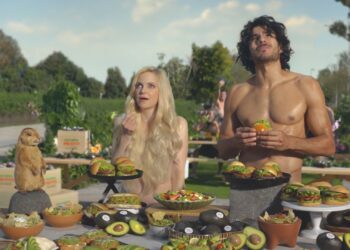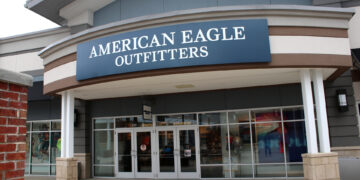This glass is too small. | Getty Images
Tables are tiny and so are the glasses
One question I often find myself mulling over while dining out is: When did the water glasses get so tiny? That gives way to other thoughts. Am I just uncontrollably, and perhaps worryingly, thirsty? Is the guidance that I drink eight glasses a day indeed bogus? Am I not supposed to drink this much water with a meal? My initial gripe, at least, is shared.
If any single piece of glassware captures the shrinking-glass phenomenon, it’s the 7.5-ounce bodega glass, sold by some brands as a “mini” tumbler. (A “medium” tumbler holds a more reasonable 12.5 ounces.) I can drink its contents in nine or fewer normal sips, which is easy when I’m nervous and looking for something to do with my hands.
Dining in New York City recently, I’ve encountered these glasses at Aldama, Corima, Gem Wine, and Place des Fêtes. They’re in use at Superbueno, King’s County Imperial, and probably a few other places on my current Resy roster. Cervo’s uses them for wine and puts water in Duralex tumblers of a similar size; as it happens, there are several options for serving New Yorkers small amounts of water. Tiny water glasses are so common that I’m now more likely to take note when a restaurant’s glasses are large — the ones at Sappe, a Thai restaurant with a sprawling space surprising for Manhattan, were fittingly generous.
The bodega glasses aren’t inherently bad. In fact, I do like them (they look nice!), so long as a restaurant also leaves some water at the table, as some of the aforementioned places do. According to general manager Vince Ott, Corima chose the small water glasses from CB2 primarily because they look good, in line with the restaurant’s sleek minimalism. But — a boon for thirsty people — they’re also accompanied by carafes. They keep servers from having to carry pitchers, which “felt clunky” and “weren’t the aesthetic we were looking for,” Ott notes.
Not all tiny-tumblered restaurants take that approach, to the dismay of we dehydrated diners. At times, mini glass in hand, I feel apologetic for how often the poor runner has to circle back to me for a top up. Other times, it’s just awkward — an endless stream of thank you’s to my server in response to an additional trickle of water. Either way, wouldn’t it be easier to either leave a carafe at the table, or just employ slightly bigger glasses? “I’ve straight up asked for a pitcher before,” says a colleague.
You may have caught onto something: I’m in New York City, where we are known for restaurants shoved into small, weirdly shaped spaces, with both tables and the distance between them shrinking to squeeze in more diners. Tiny glasses, obviously, take up less space on tiny tables. “The size of our tables are quite tight,” says Nialls Fallon, partner at Cervo’s, Hart’s, the Fly, and Minnow. Tiny glasses work toward “trying not to have a lot of things on the table that have a lot of height to them” as dishes come and go.” Still, that rule can’t be put in place completely: To save staff from constantly having to refill glasses, Cervo’s does also leave a bottle of water at the table.
Cervo’s is a good example of why the bodega glasses are beloved by restaurants more broadly. Above all else, they’re practical and versatile. When the section of Canal Street on which Cervo’s is located closed to cars, the restaurant added 40 seats outside. “We really needed to rethink the way that our bar operated and how we stored all of this additional glassware and plateware,” Fallon says. Bodega glasses — which Cervo’s uses in multiple sizes to serve wine, spirits on the rocks, mixed drinks, and beer — nestle in compact stacks. Again, the lower center of gravity of the mini tumblers is helpful. “Being in the middle of Canal Street, which is a wind tunnel, a lot of our stemware was blowing over,” he says. A tiny glass, however, is too low to blow over.
I’m not a picky diner. I’m happy to live with service fees, competitive Resy reservations, dining time limits, tiny tables, and the requisite tiny glasses. This is dining in New York City now! Just please — for the restaurants that don’t — leave me the carafe.














